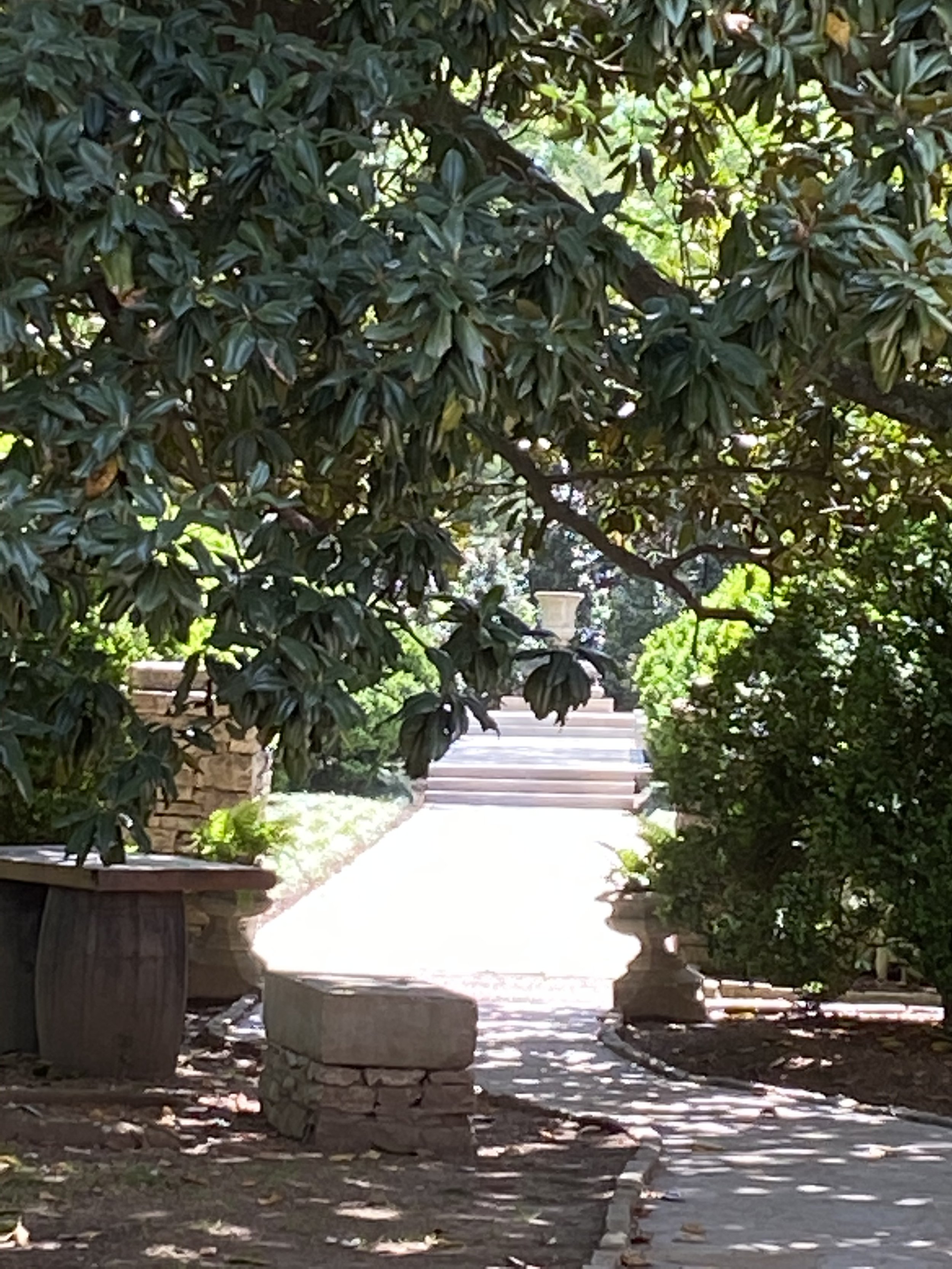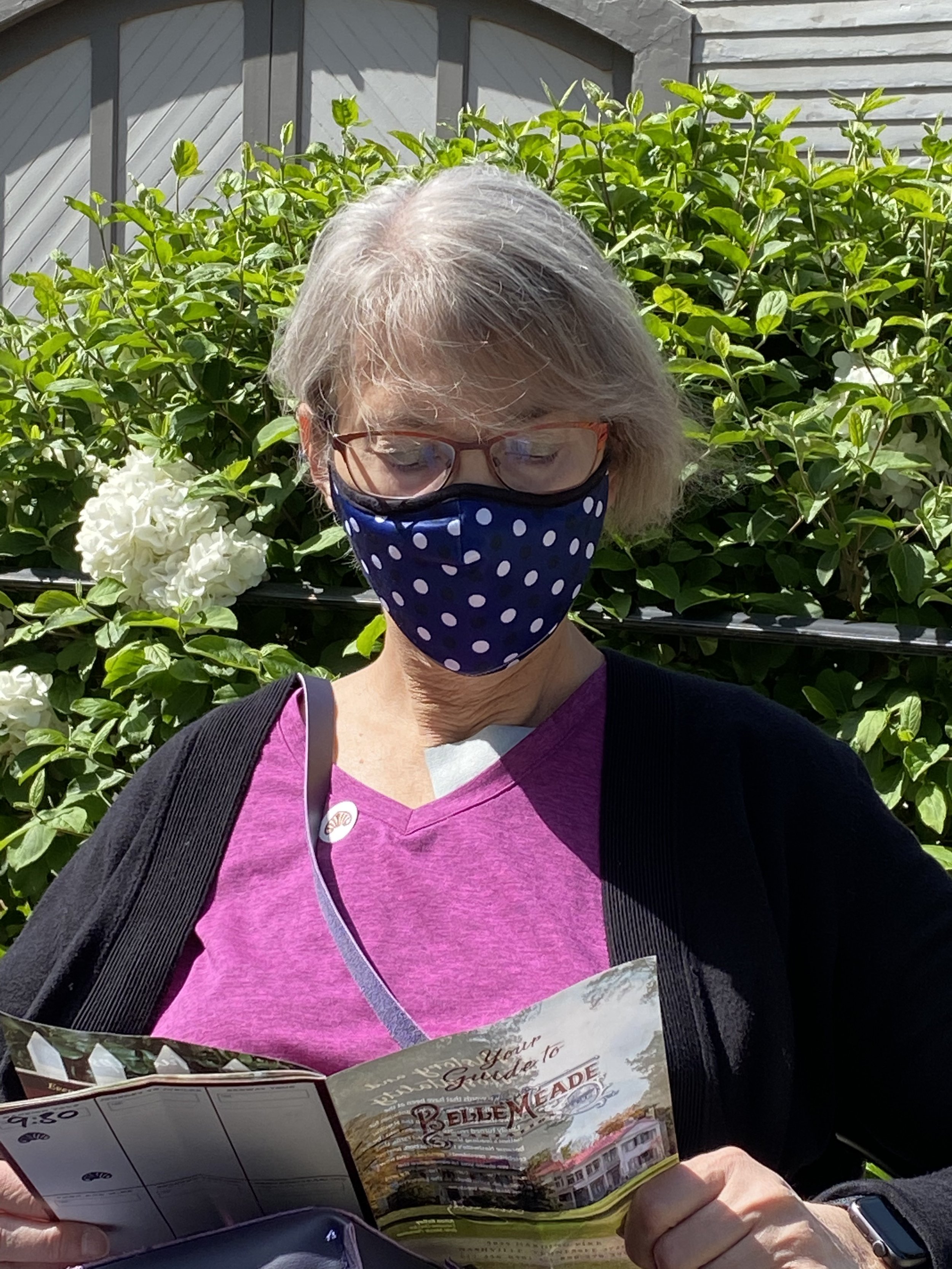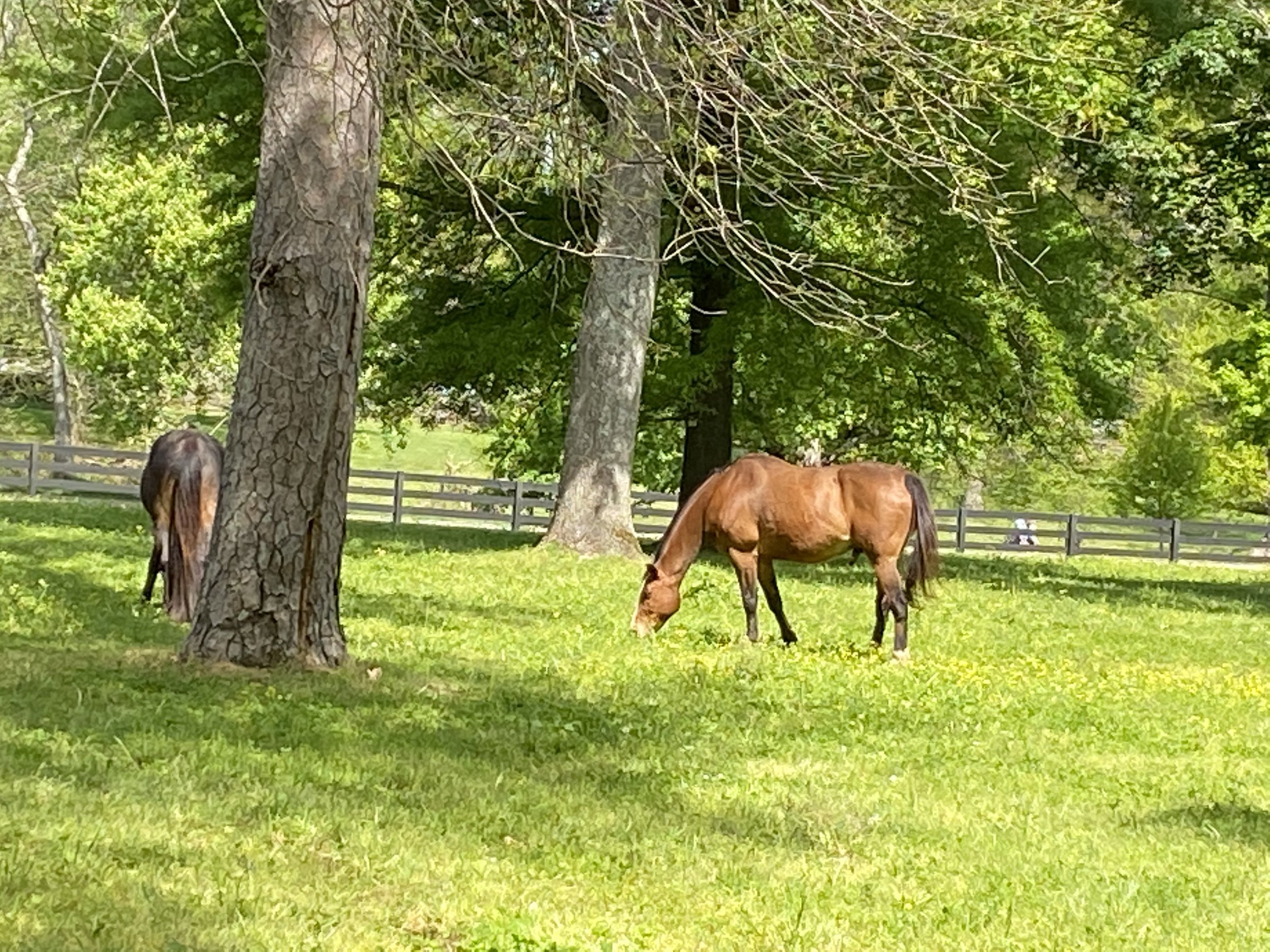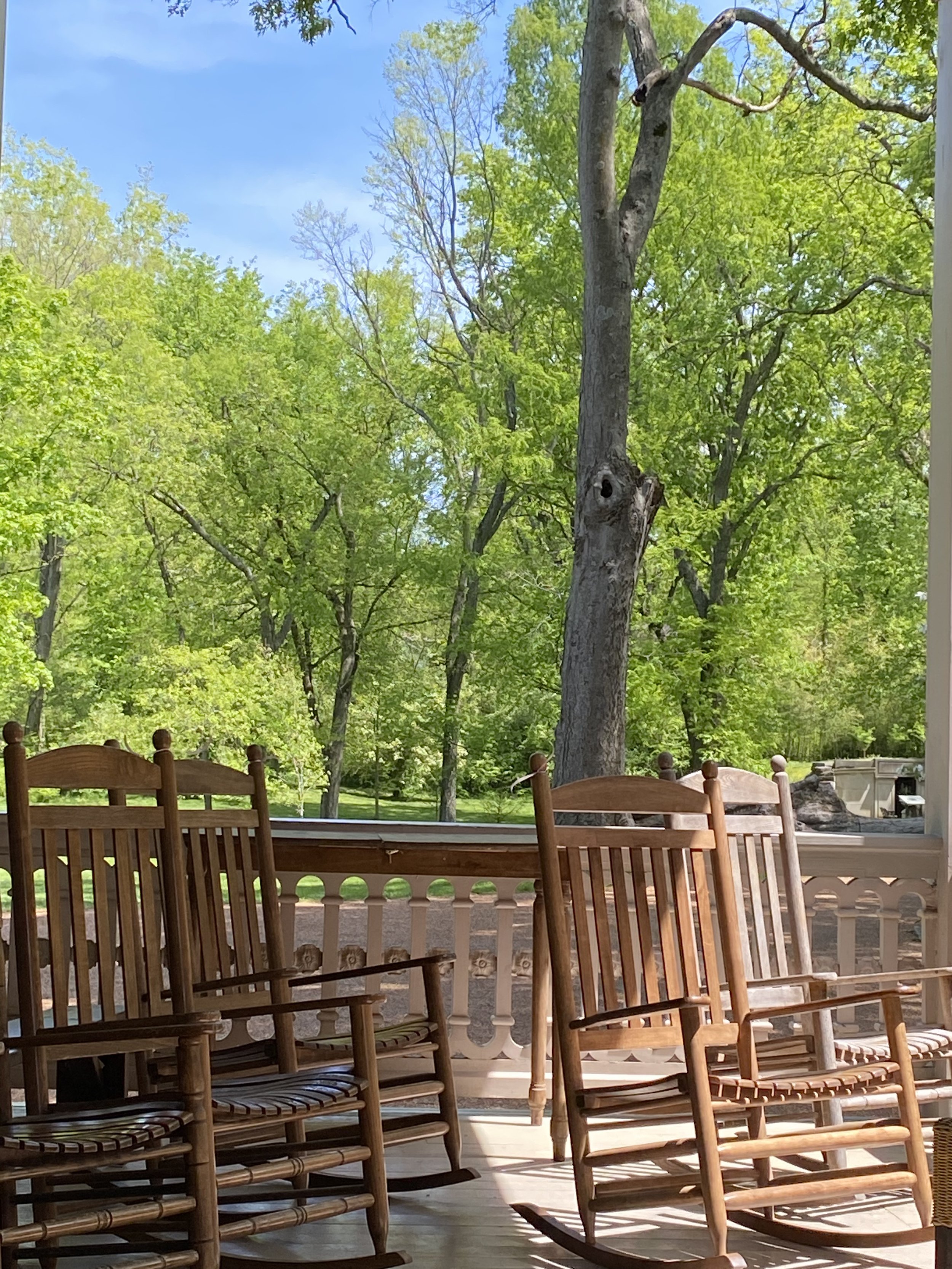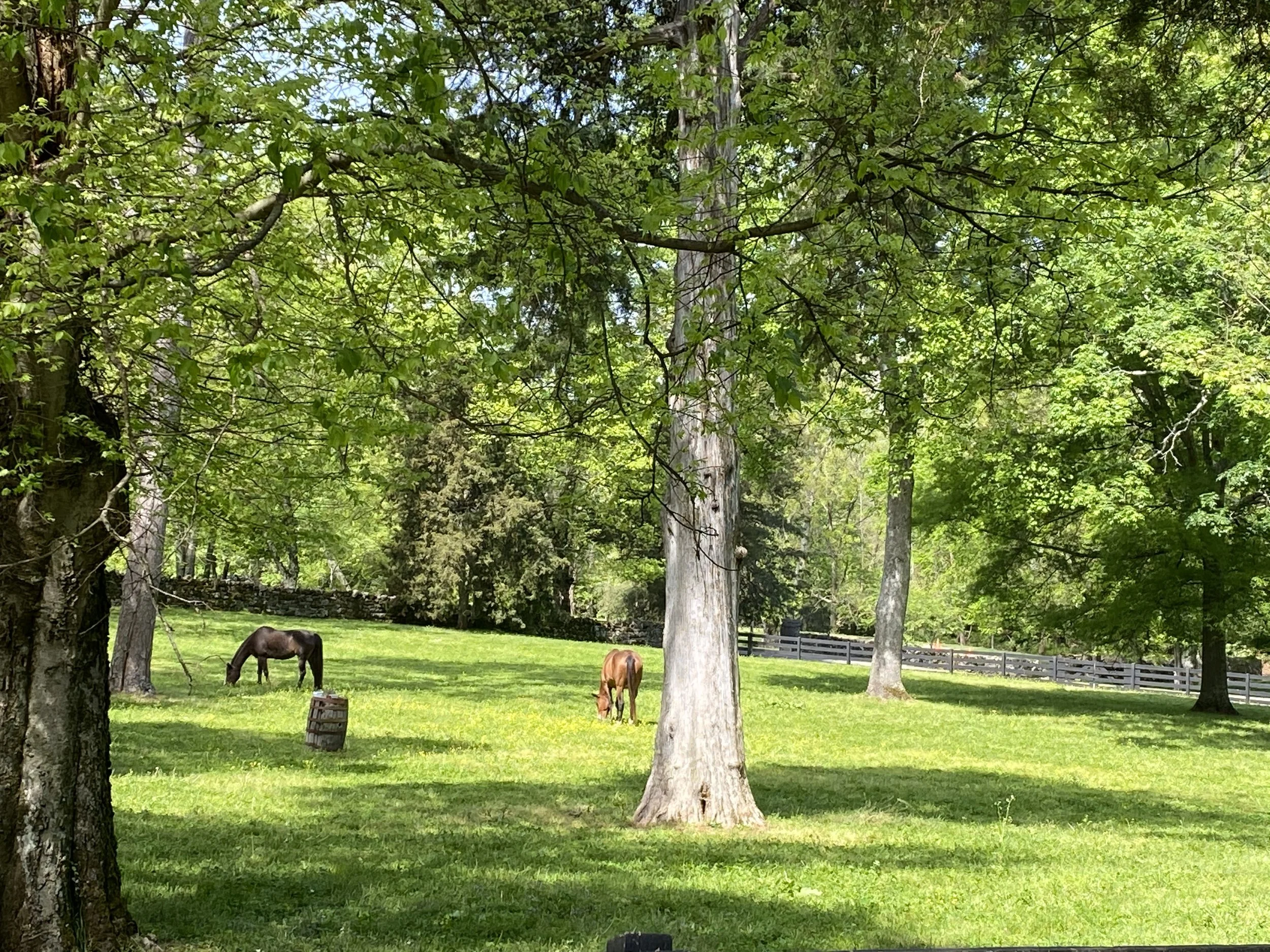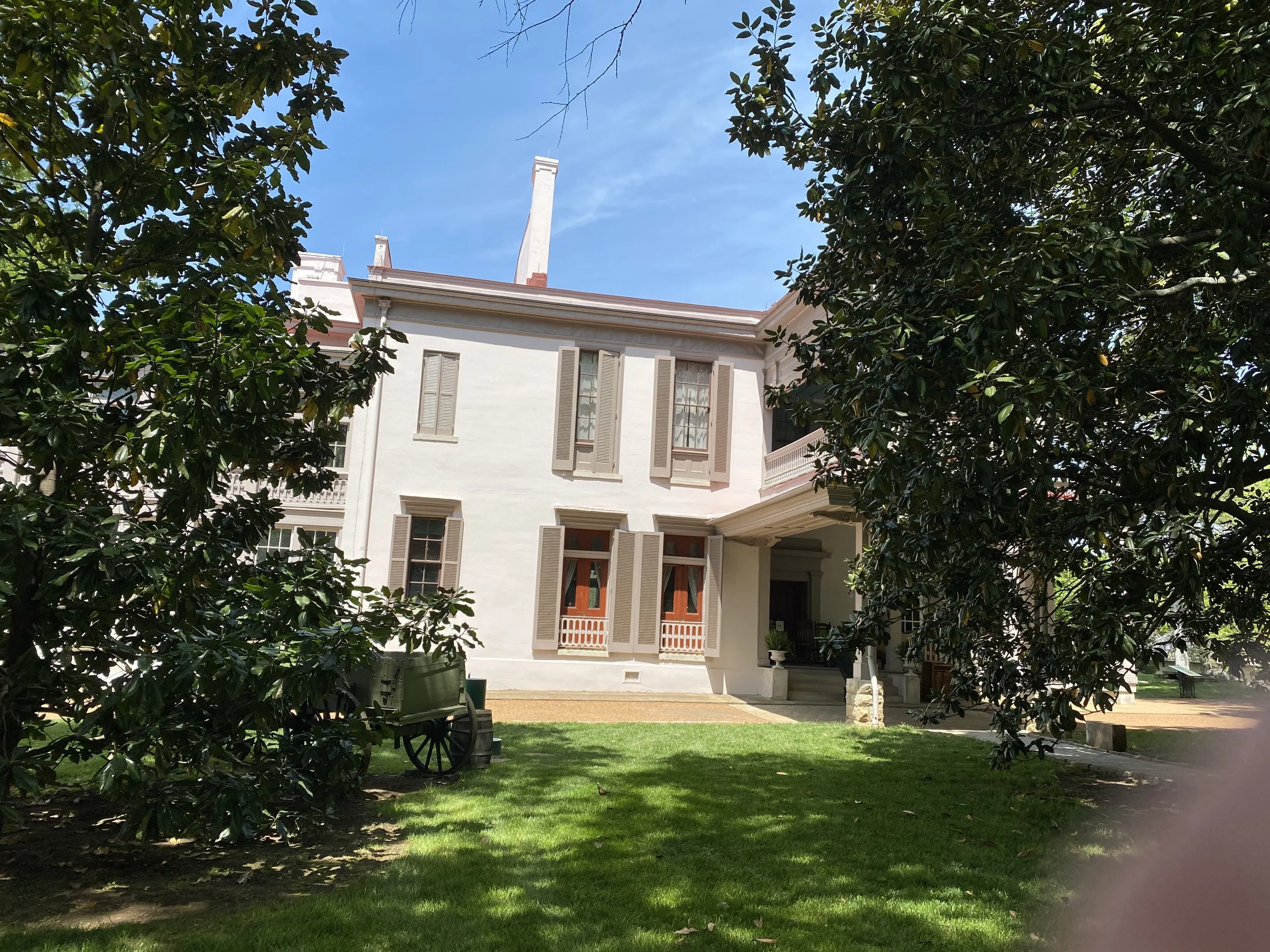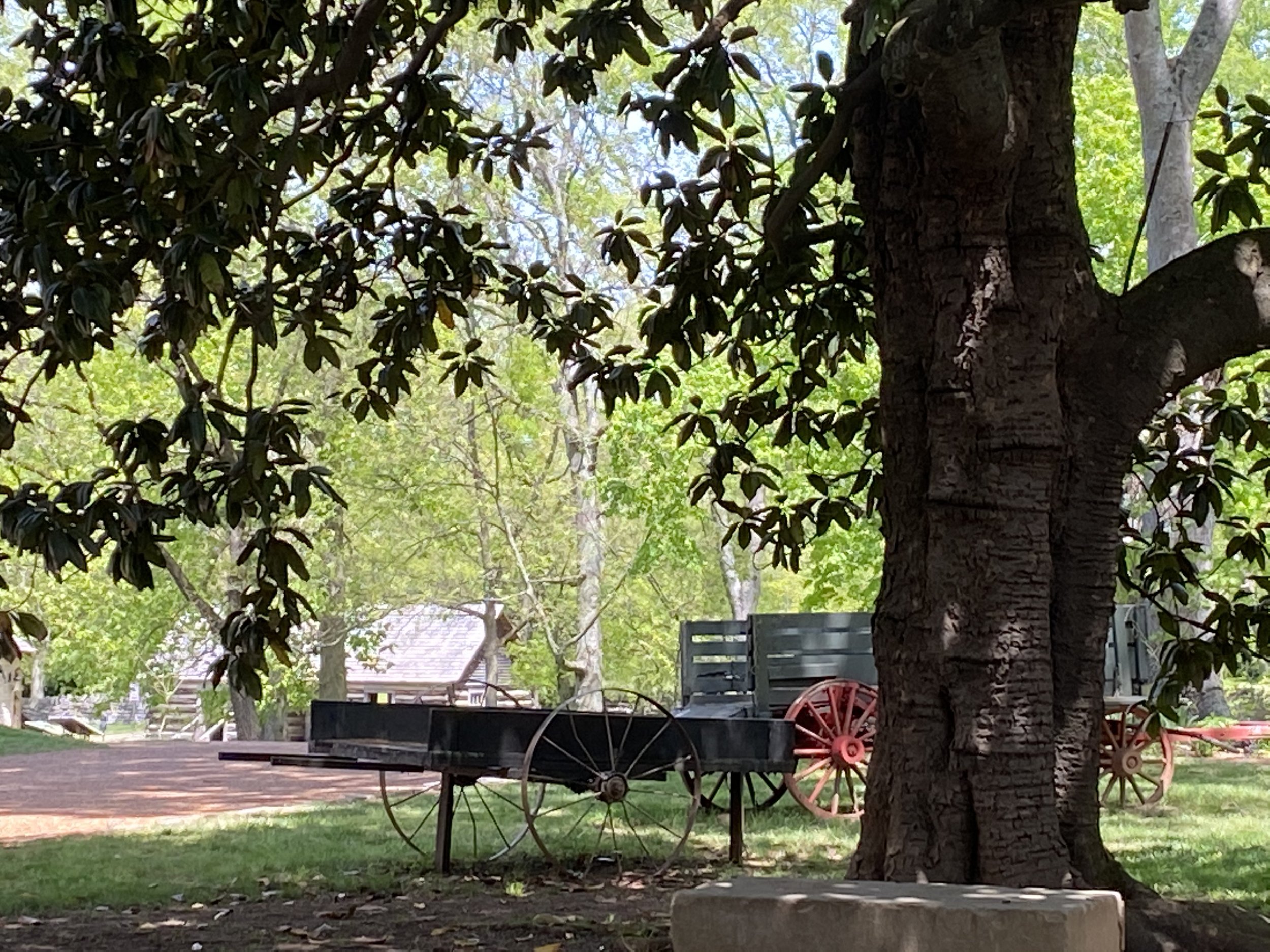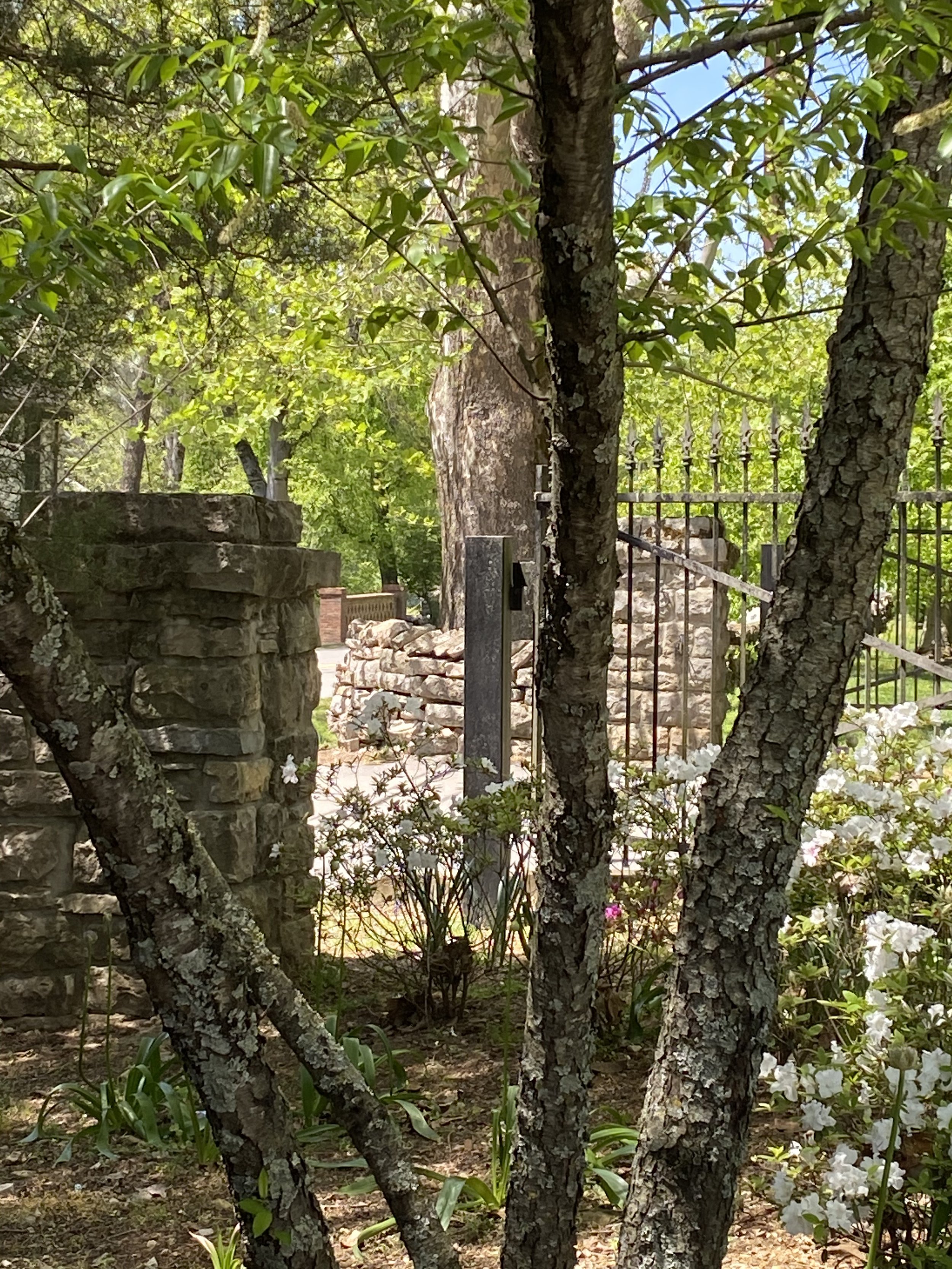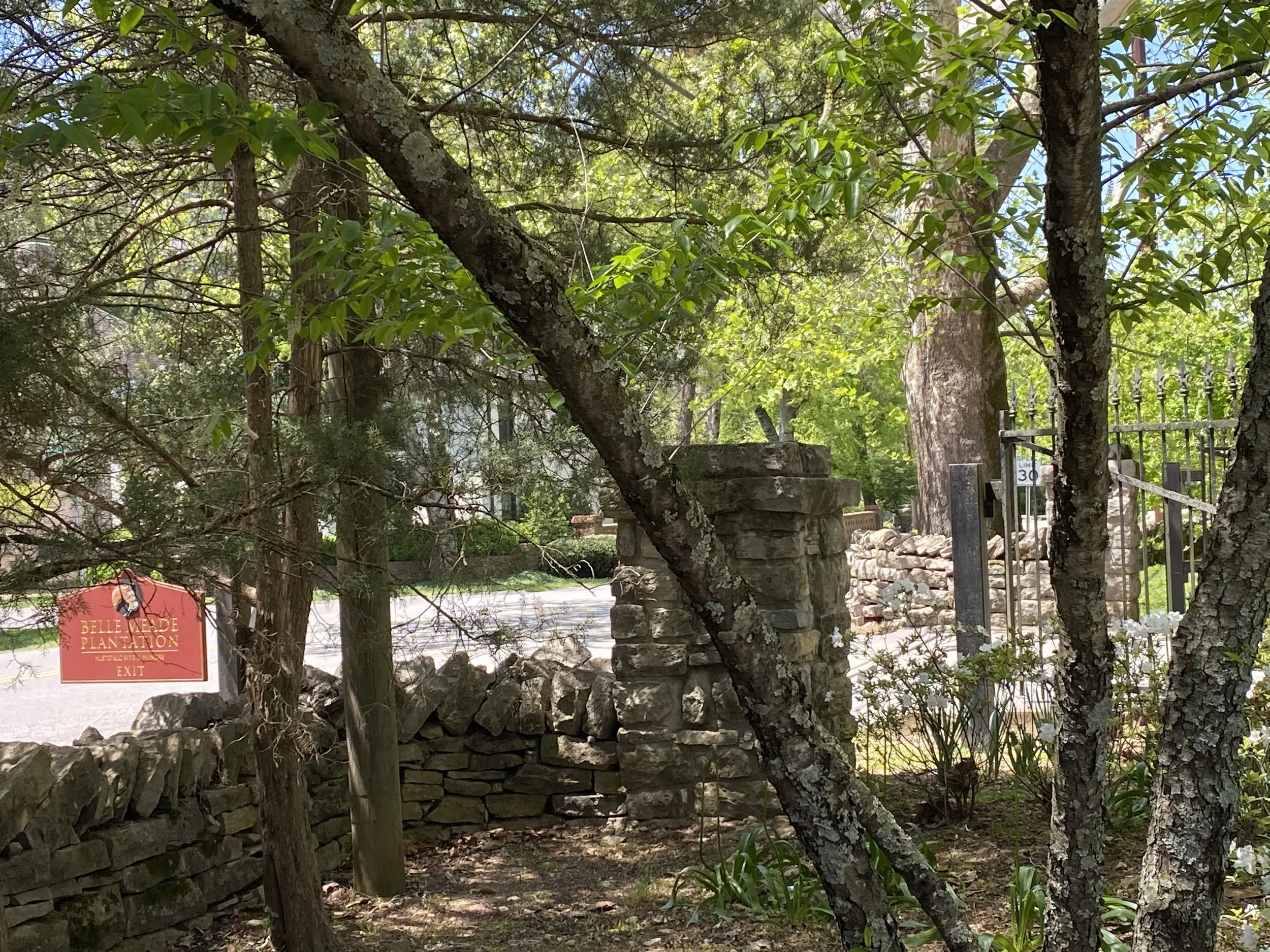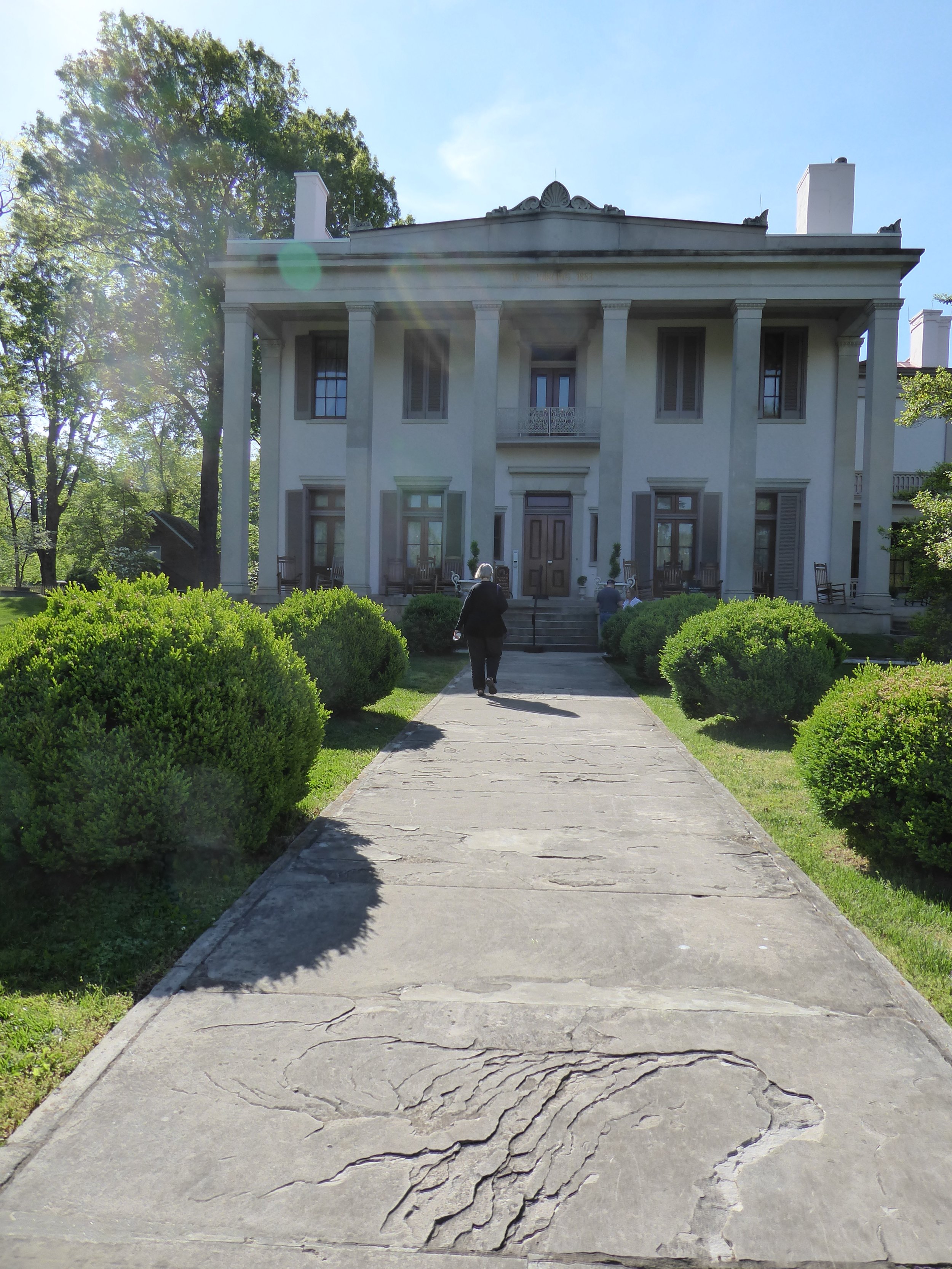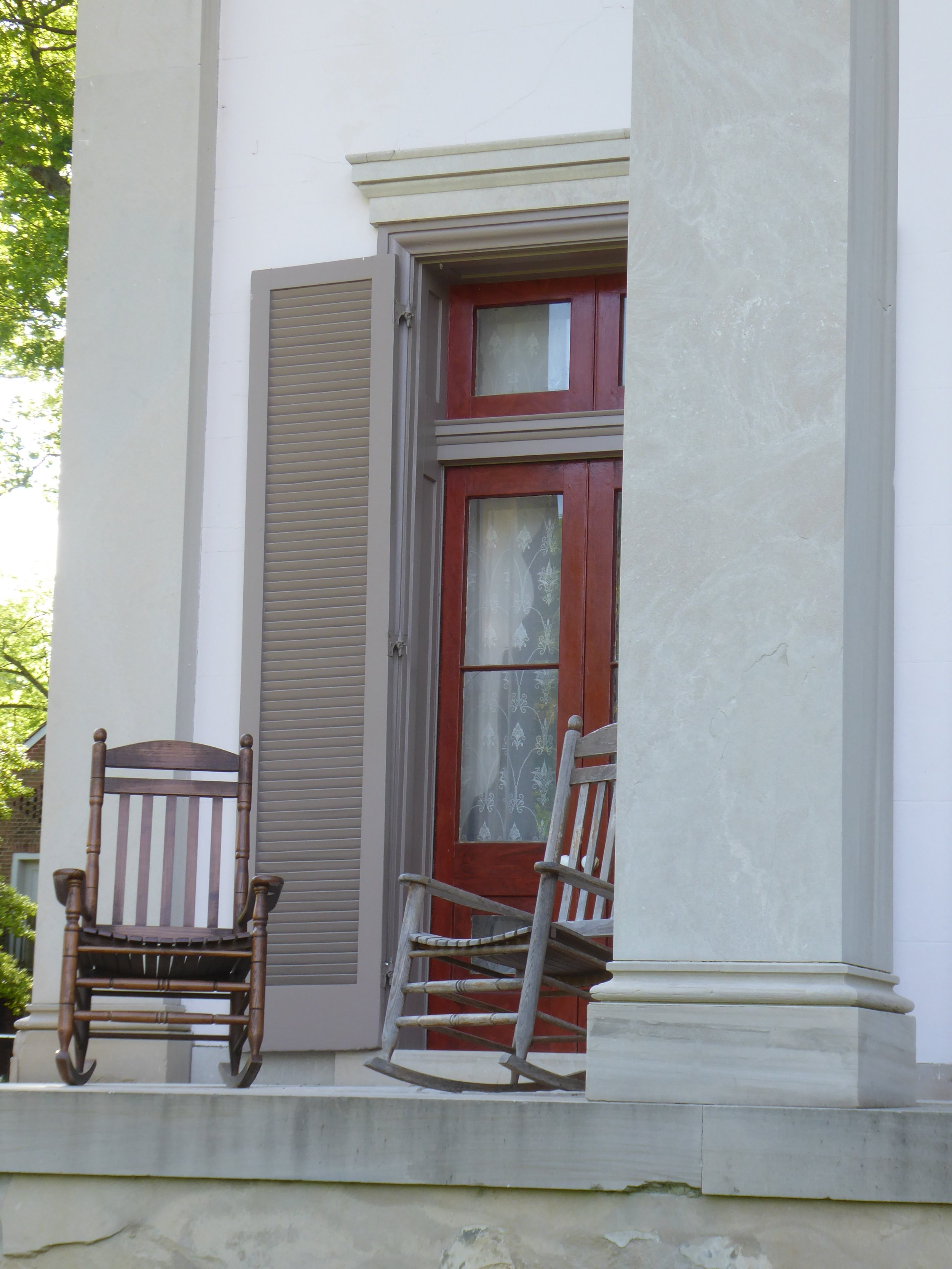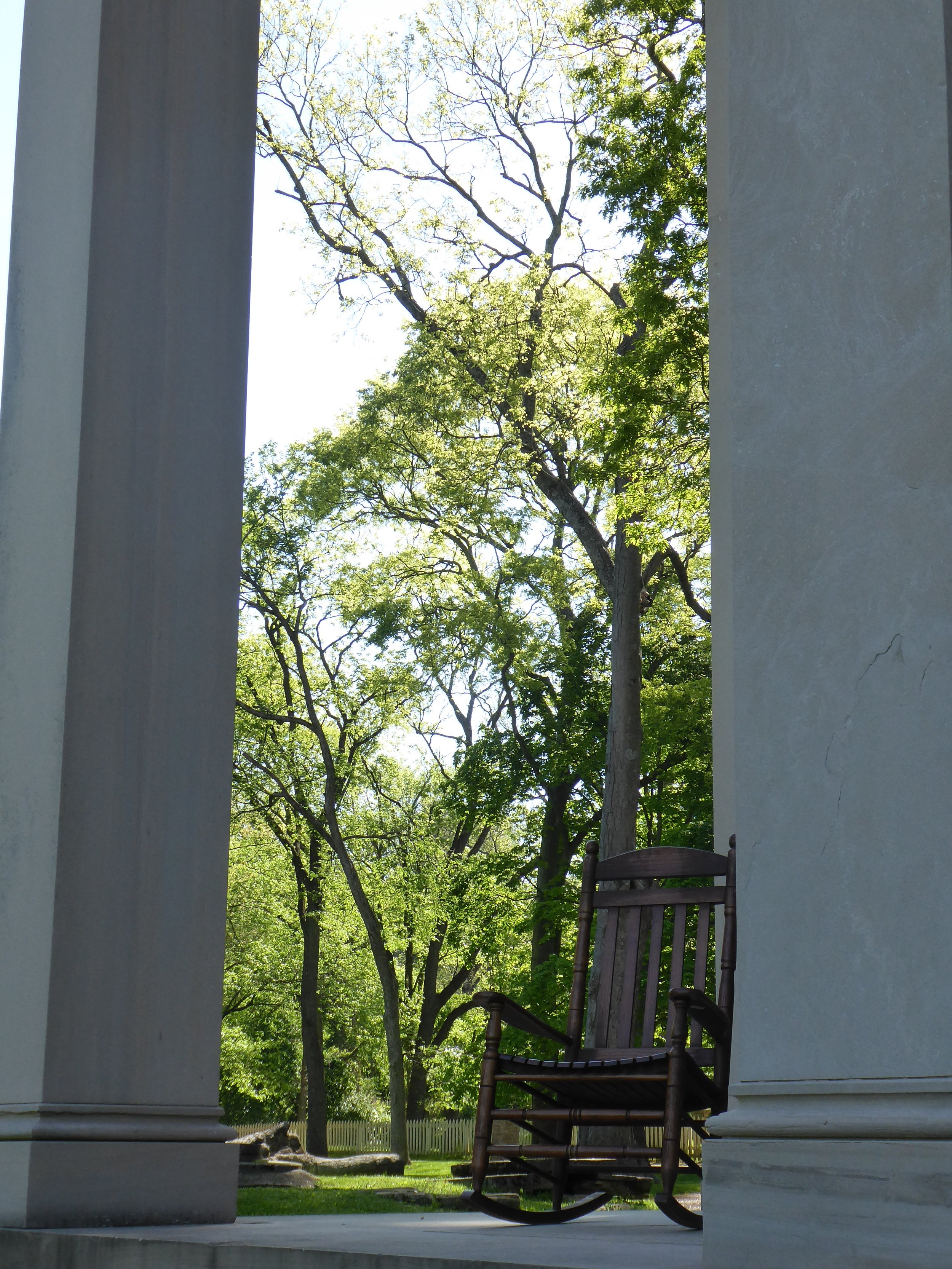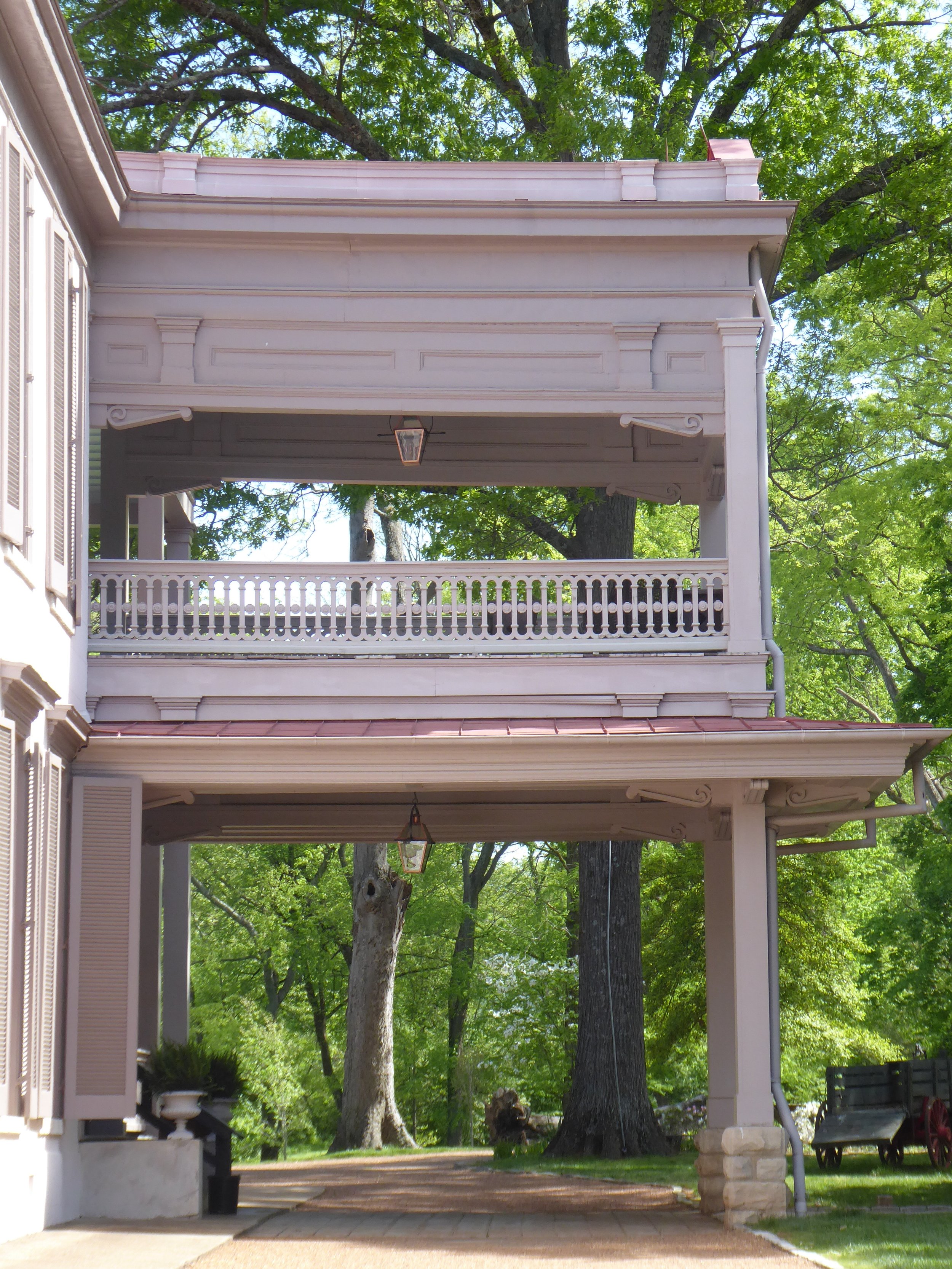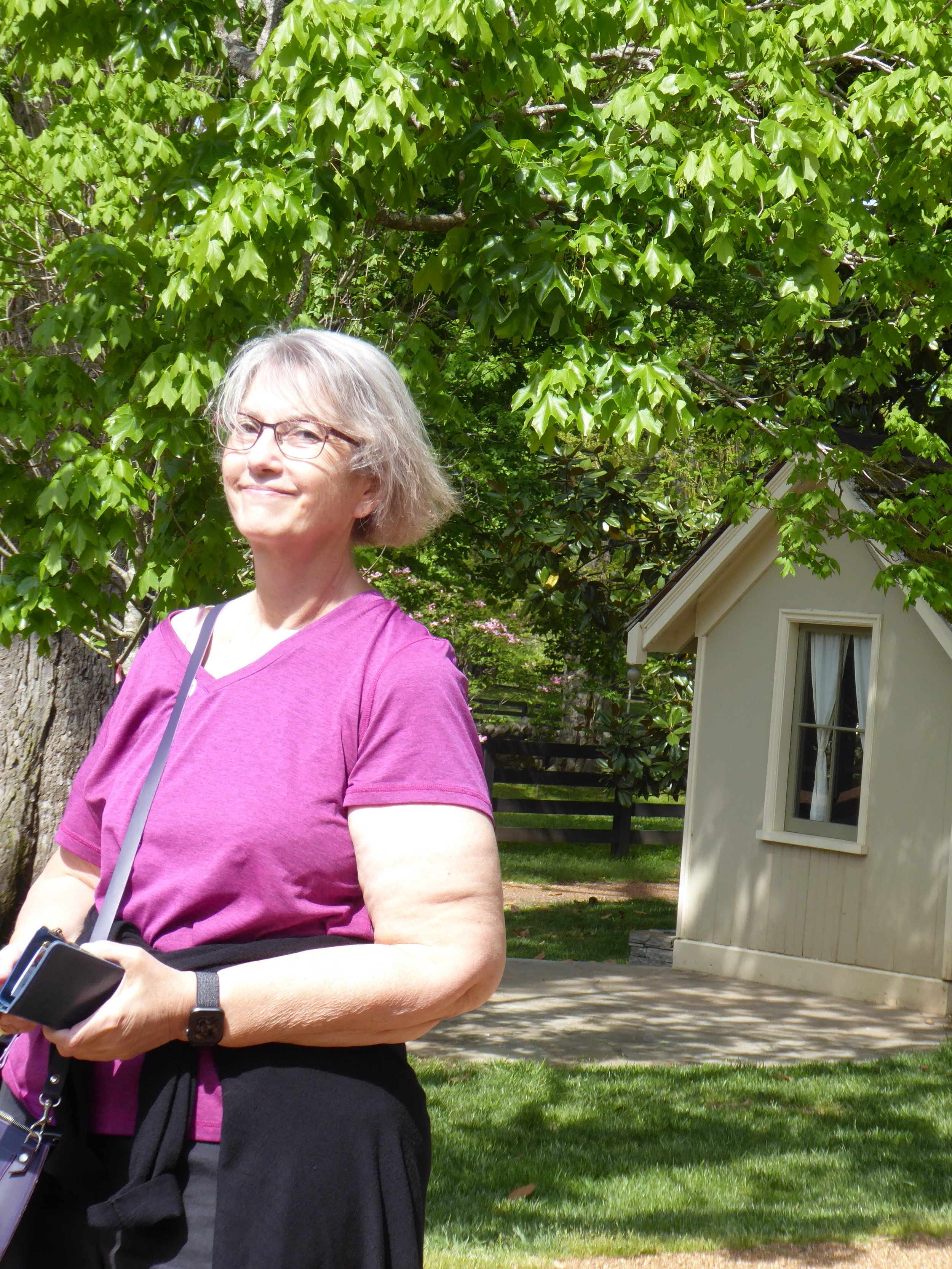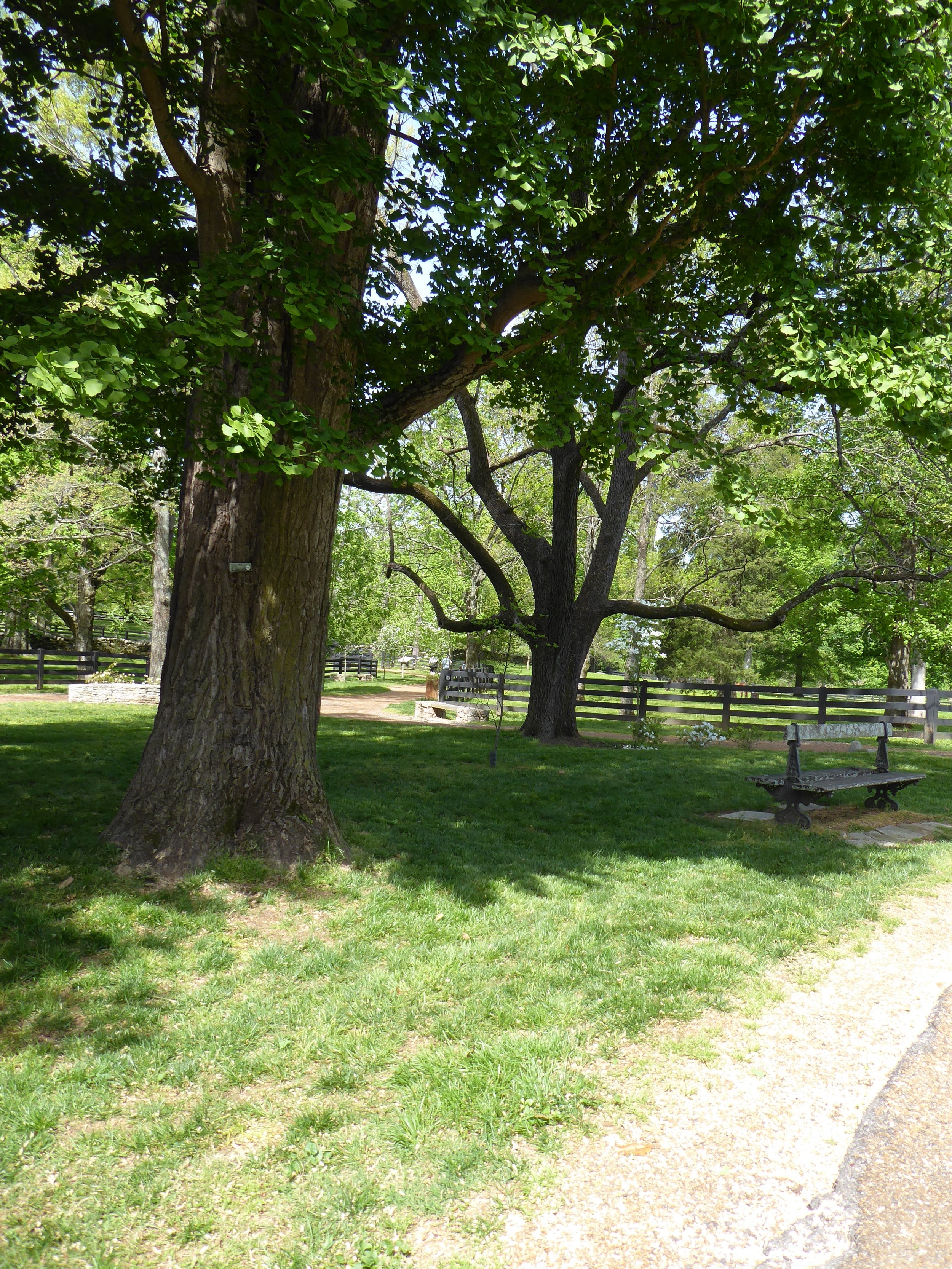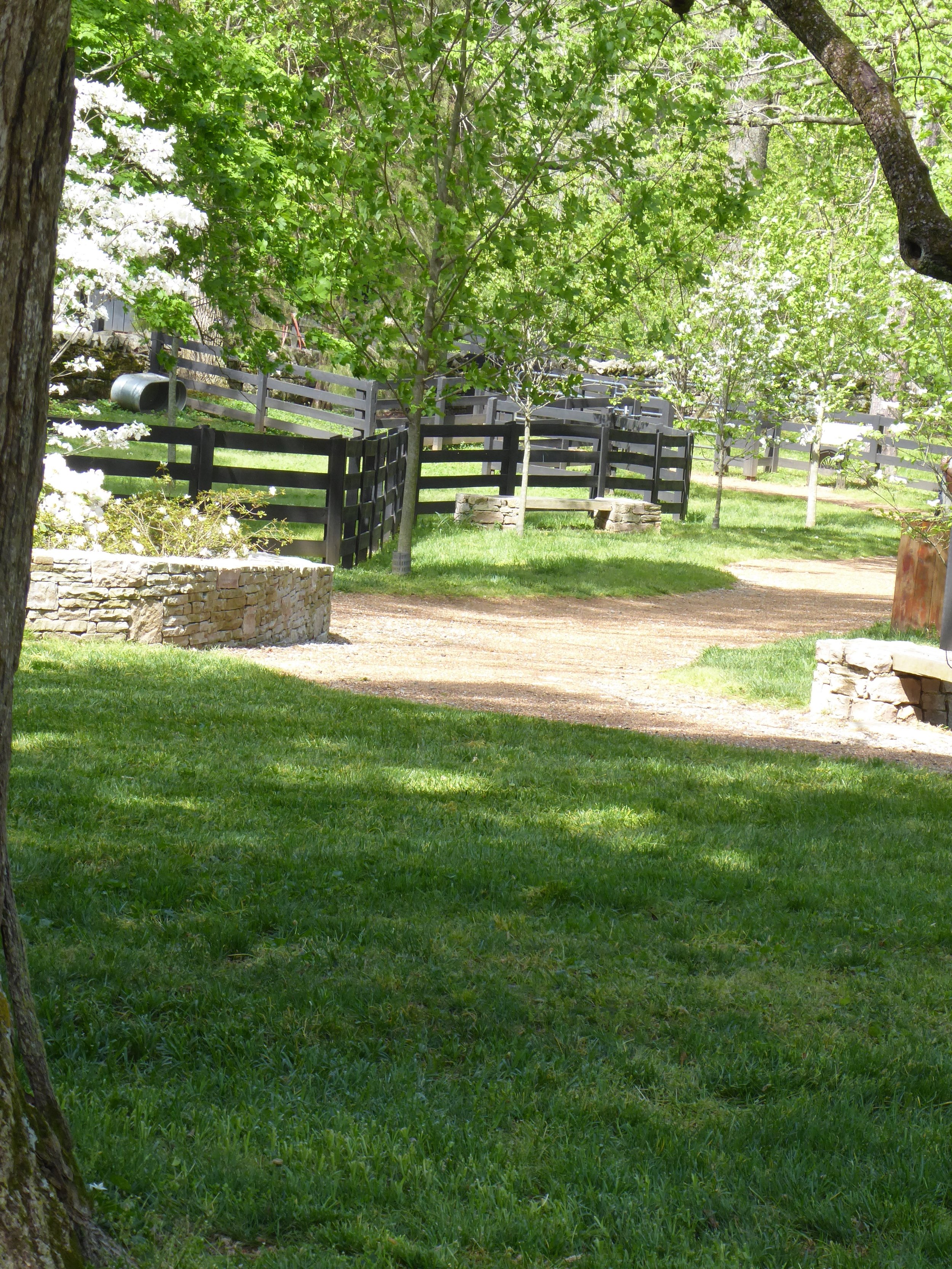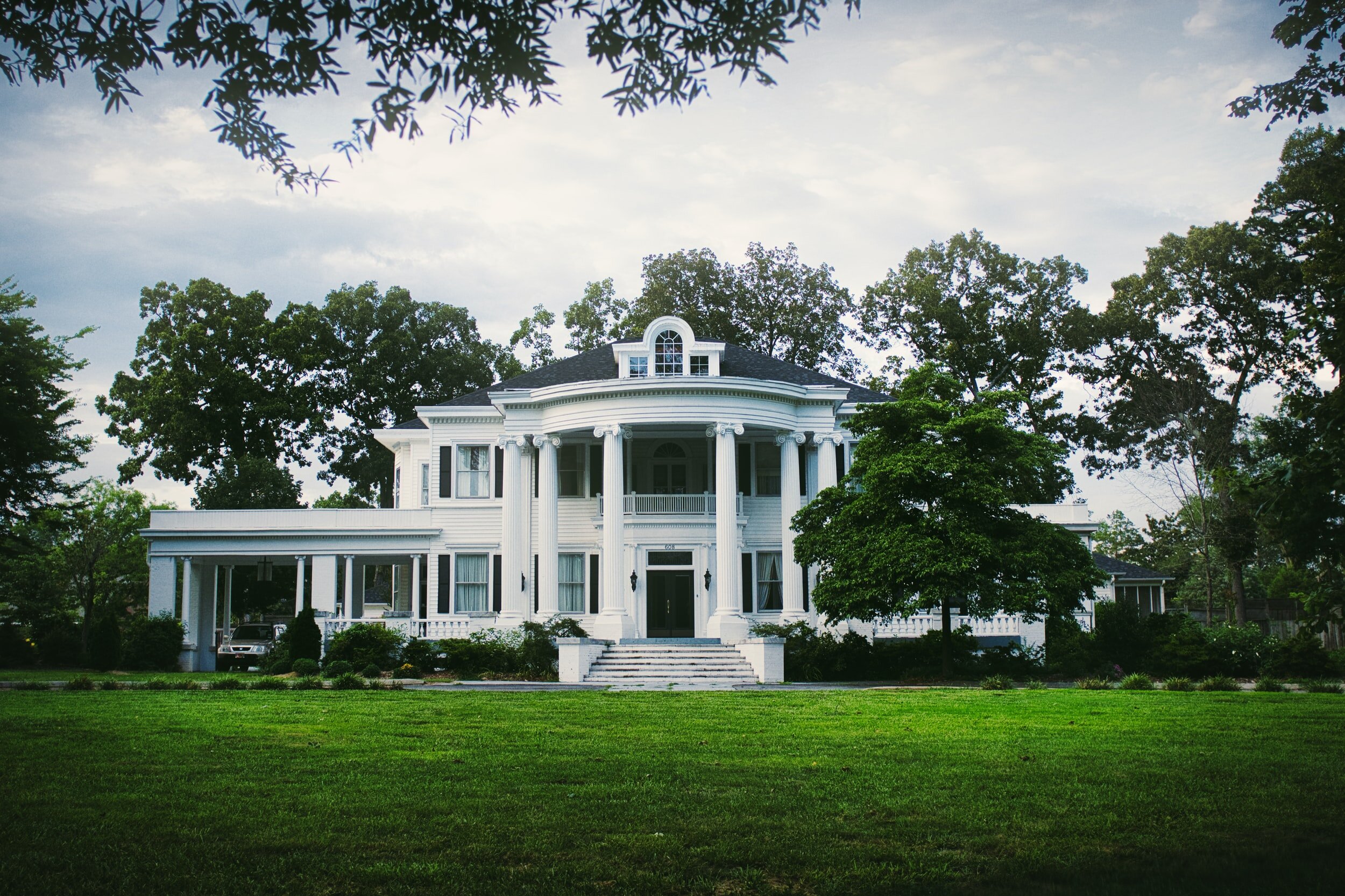
Belle Meade Plantation
We had $25 tickets for a tour of the Belle Meade mansion that spring morning and we were running a tiny bit late. It took us longer to get there than the GPS had promised, plus there was some confusion about the entrance site. We parked in a hurry, confusedly navigating the building housing the ticket office, gift shop and restaurant, found our way to the correct level and then scurried around the side of the building looking for the tour starting point at the front. We were right on time. 5 minutes later a guide appeared to show us through the house. After seeing the house we toured the grounds on our own.
There are four interesting facts about Belle Meade. 1. The plantation was built right off the Natchez Trace Trail, the main road between Nashville and New Orleans. The road we drove on to get to Belle Meade was built on top of the Trail. John Harding bought the land to service travelers along this road which at this point was a muddy dirt trail that sometimes was actually in the creek that flowed by. So interesting. 2.John Harding was a pecuniary man. He built a log cabin, (replica on the grounds). A simple building with only two rooms, he, his wife and three children lived in it for 12 years despite the fact that he was prosperous. He refused to spend his money on a house when he could pour it back into the farm. 3. Belle Meade’s prosperity eventually came from raising, racing and breeding thoroughbred horses. This success was only available because they bought a slave from Virginian named Robert Green who had training in horse breeding and racing. Without Robert Green’s expertise the Harding’s would have been just another agricultural farm family and not one of the wealthiest Nashville families.
Back to our tour. The house is nice inside, small but rather forgettable . It really was the outside porch and grounds that made our day, I am sorry we were unable to take the Jubilee tour which features stories of the African Americans who lived on the plantation. If you go make sure you take that tour.
It was a splendid day, perfect temperature with a slight breeze. Mary and I were lulled into somnolence by the comfie porch rockers, the shade, the breeze and the view. It took an act of will to get up and explore the stables and grounds. When we did, it paid off handsomely. The grounds are exquisite. Horses picturesquely roam a small meadow. There is a mill house, a blacksmith, a meat smoking building, a dairy and some other agriculturally related outbuildings. There was a huge stable with real carriages, within which the on-site winery was giving wine tastings. I’ll give them credit- that was cool. The original log cabin or a replica (I’m not sure) is onsite as well. The grounds provide a lovely meandering walk that takes you all the way down to the road and the creek that runs alongside it and back up to the house, and around the back of the house and its gardens and out-buildings. It’s spectacularly lovely. We enjoyed it quite a bit, including the bits where we semi-snoozed on the benches and in the rockers. It guess what I’m saying is that is was so easy on the eyes and the public spaces so comfortable, that we just turned into boneless jellyfish. Sooo, I don’t know, take that as a warning?
The rise and fall of this plantation occurs right smack dab in the run-up and aftermath of the civil war, which did not seem to affect their prosperity as much as you might imagine. They had 133 enslaved people, 40 women, 33 men and 63 children. The adults were mostly skilled craftspeople. After the war they reduced their staff to 72. Or did they. They only had 73 adults, so they reduced their staff by one adult and 63 children. Essentially they did not reduce their staff. I would love to know the economics of this. I seem to be the only person who caught the blatant lie about reducing staff. The turnover and its economic ramifications of transitioning from unpaid enslaved people doing the work, to free paid workers is glossed over in every history I read. The Harding family went on being prosperous right through to the 1920’s. I think it is an important point to make that the Confederate declaration that they would lose money by freeing enslaved people is inaccurate. They may have lost an asset they could use to borrow money, but it didn’t seem to affect their overall yearly profits.
It’s fascinating traveling through the south reading historical markers and visiting houses, mansions, and plantations where the wording suggests that losing the war caused prosperity to turn to ashes. I think we should all question this assumption vigorously.
Controversy aside, we highly recommend visiting Belle Meade. Please do take the the Jubillee tour.
